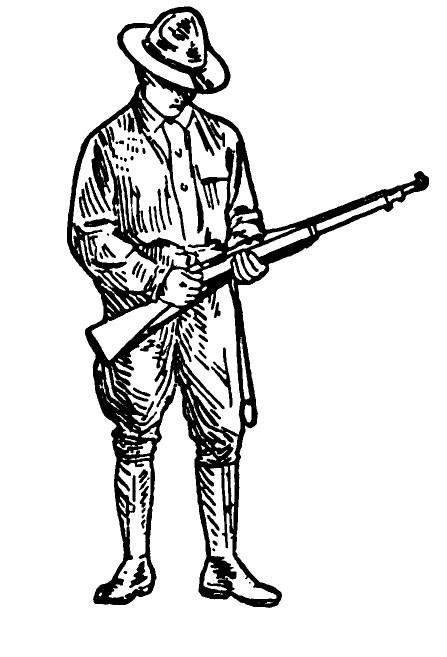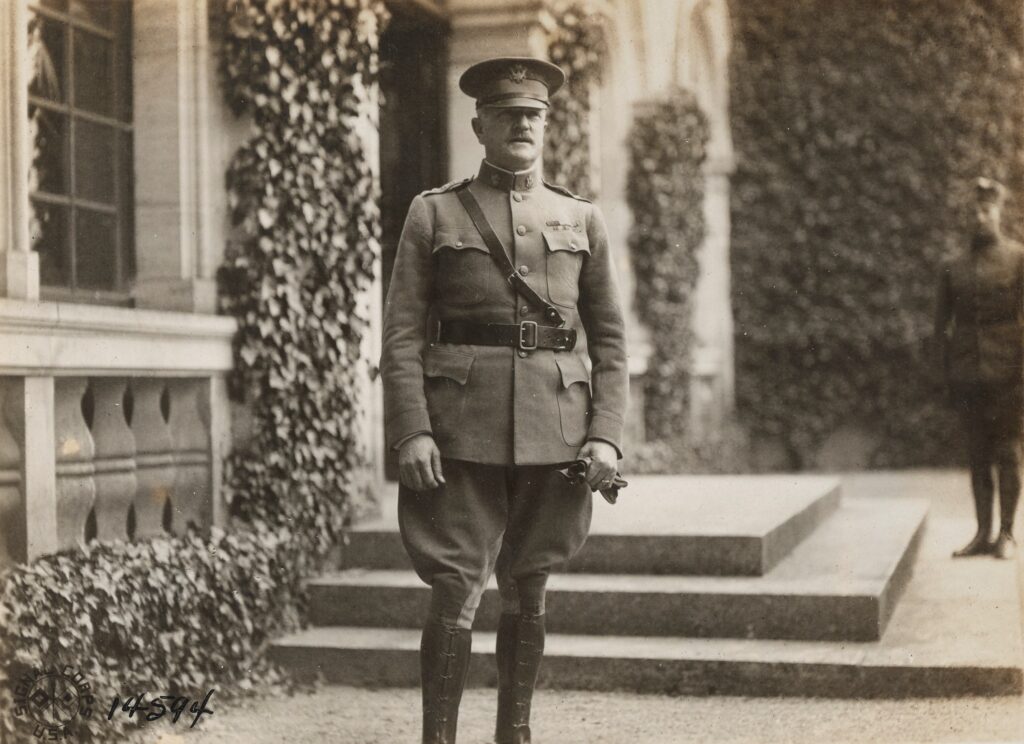While the Committee on Education and Special Training (CEST) placed heavy emphasis on the academic side of instruction for SATC members, it was also important that sufficient military instruction was given. If these soldiers in the SATC were to succeed in any advanced training school, whether it was a specialist technical school like the Coastal Artillery or officer training at an Central Officers’ Training School, they needed to know the basics about being a soldier.
In a Special Regulations bulletin on the establishment, administration, and maintenance of the SATC, the War Department and CEST stated that practical military training was scheduled for eleven hours per week and consisted of, “drill, theoretical military instruction, and physical training.”1

General John J. (Blackjack) Pershing, the commander of the American Expeditionary Force, demanded a lot from his soldiers. He “cultivated a culture a strict obedience to orders throughout the AEF.”3 The best way to instill this obedience was through drill, a longtime practice of armies world wide. Drill included marching in various formations, training with rifles, and other exercises.

Pershing also valued aggression and preferred fighting in the open, utilizing mobility and marksmanship, rather than using trenches.4 In order to make this aggressive fighting style effective, soldiers needed to be physically fit. Additionally, theoretical military instruction was essential for SATC members. Since a majority of them were expected to become officers, knowing how lead men in combat, read a map, and understanding the hierarchy of the military were essential skills.
Notes:
- Student Army Training Corps: Special Regulations, National Archives RG165 NM-84 Entry 412 Box 681.
- Col. James A. Moss and Cpt. George R. Guild, Military Students Text Book Volume I: For The Use Of R.O.T.C. And S.A.T.C. Units At Educational Institutions (Menasha, Wisconsin: George Banta Publishing Company, 1918), 56, https://babel.hathitrust.org/cgi/pt?id=uc1.$b293492&view=1up&seq=10.
- Edward G. Lengel, Thunder and Flames: Americans in the Crucible of Combat, 1917-1918 (Lawrence, Kansas: University Press of Kansas, 2015), 14.
- Edward G. Lengel, Thunder and Flames: Americans in the Crucible of Combat, 1917-1918 (Lawrence, Kansas: University Press of Kansas, 2015), 14.